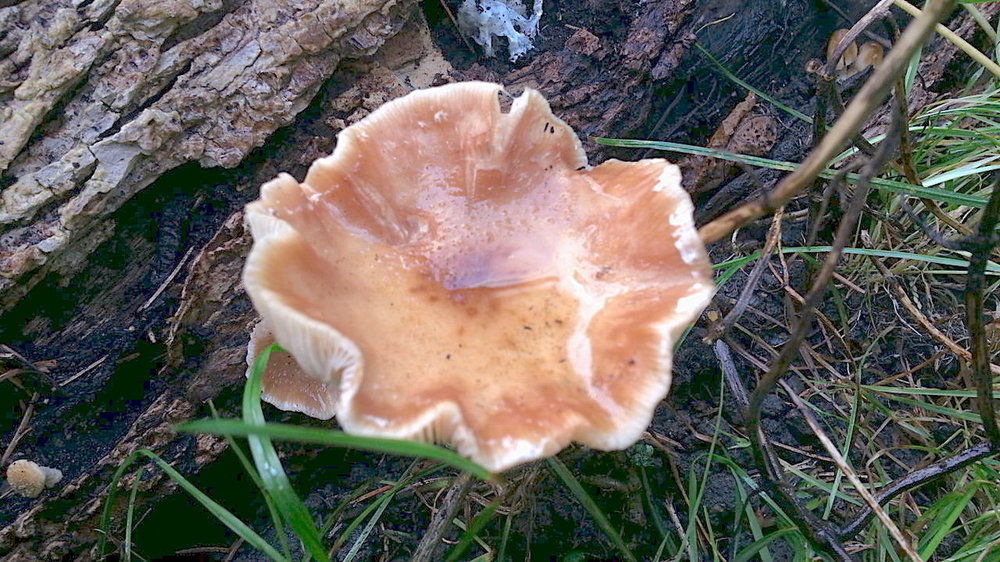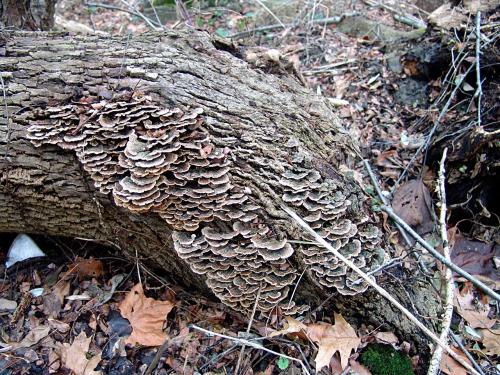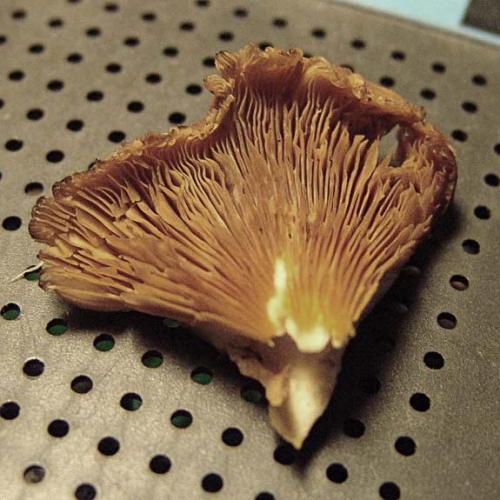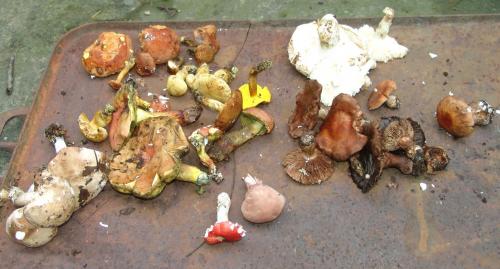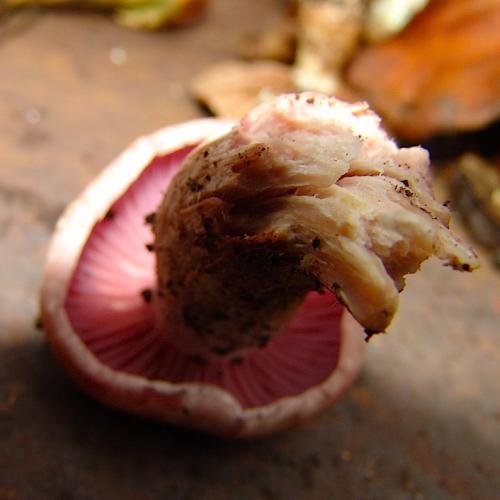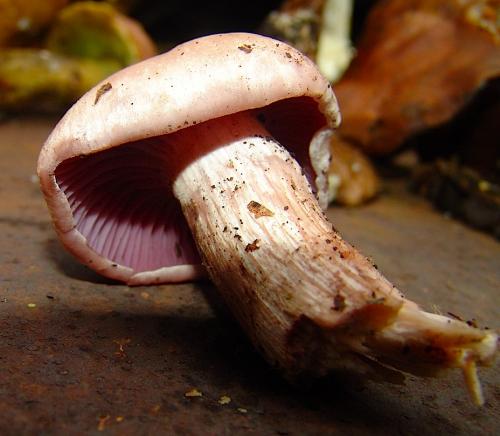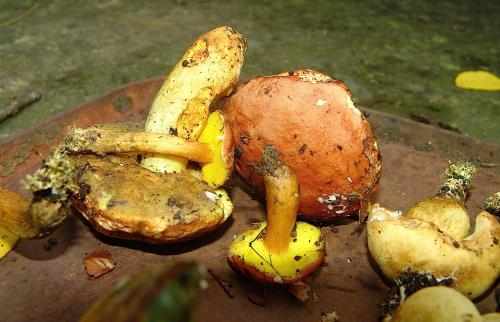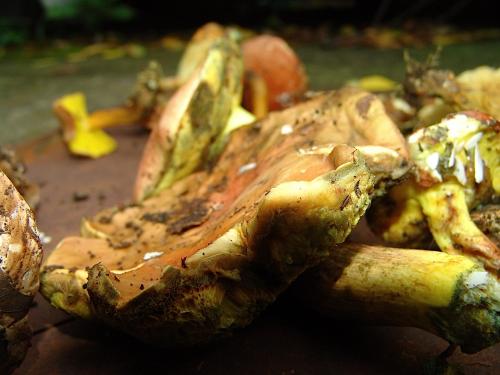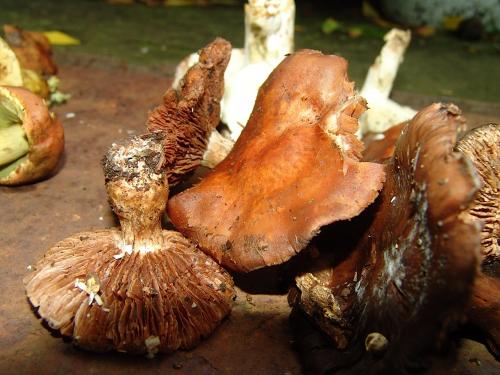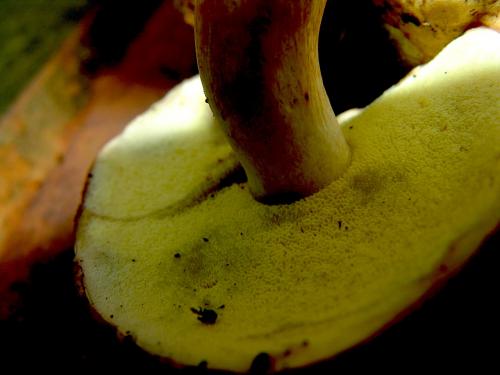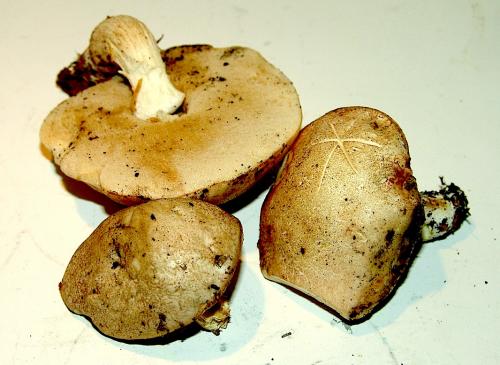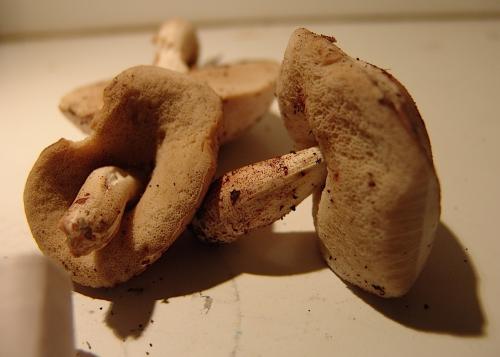-
Posts
15 -
Joined
-
Last visited
Profile Information
-
Location
Cuyahoga County, Ohio
Actionclaw's Achievements
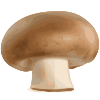
Agaricus Newbie (1/5)
-
Actionclaw started following What was YOUR "Hen of the Woods" experience? , Oyster Mushroom? , How to sustainably harvest Grifola frondosa/Maitake and 3 others
-
Some sort of Oyster Mushroom? Found growing on an old (I think) elm log but doesn't look, to me, like an Elm Oyster. Thanks for any help
- 4 replies
-
- oyster mushroom elm oyster
- pleurotus ostreatus
- (and 1 more)
-
I just found my first of the season "Hen of the Woods". It's still quite small, only about softball size. Most of those I've found in the past were soccer to basketball size and I know that they can grow even larger. Because they're nearby where I'm easily able to later return for more -- provided no one or nothing else eats or destroys it -- I'd usually just cut off a few pieces at a time. In this case, it was more an issue of keeping them fresh/ lack of storage than expecting them to continue to grow larger. Now, with this new one still small, is slicing off parts detrimental to its potential growth? Can it still grow from where it was cut or does that part "scar"/callous over? Will it cause it to develop new "caps" or cause the existing ones to grow more? Is it OK to harvest small amount at a time or better to be patient and wait? Thanks
- 1 reply
-
- harvesting grifola frondosa maitake
- hen of the woods
- (and 2 more)
-

Are these "Oyster mushrooms" (Pleurotus)?
Actionclaw replied to Actionclaw's topic in Identifying Mushrooms
I have a few follow up questions. Further down the log (or "up the tree" depending on how you look at it) was another cluster too small to bother with at the time I photographed those shown. The next day (I believe), after a little light rain, these were the same size or larger than the rest. In every obvious way, they appear identical except, while the first groups were white or "off white" these (and another nearby cluster) have a darker, beige or tan pileus. I can't now find the details but I once read that there are two Pleurotus (possibly ostreatus & populinus?) that are nearly indistinguishable from one another except for the type of tree on which it grows (which, in my case is uncertain) and the darkness of the cap. Isn't it unlikely for two similar varieties to grow on the same log? If they are the same type, what other factors effect coloration? Normally, I would assume the darker one to be older but, in this case, I know it is not. Sun exposure? Can mushrooms get a tan? When collecting these, I sliced them off leaving a significant portion of the base attached. Will they fruit again as do cultivated oysters? If so, is there anything I can do to help, improve conditions, increase yield, etc? mist them, add humidity, shade them or (I'll have to research this, but) whatever care is required when cultivating mushrooms? Thanks -

Are these "Oyster mushrooms" (Pleurotus)?
Actionclaw replied to Actionclaw's topic in Identifying Mushrooms
I neglected to mention we also have some large, old Black Walnut trees 'round here and looking it over more closely, I believe this to be one. I read Pleurotus and Black Walnut do get along so this would make sense. A nice little article about Oyster mushrooms some may find helpful: I went back and gathered some to try for lunch intending to leave the smaller clusters but -- again, you hit the nail on the head regarding the black beetles which were moving in, so-- I harvested most bringing home nearly 5 lbs! (..and while preparing them, probably ate too many; perhaps as much as 1/3!) Thanks again, Dave W, for your help. Thanks for lunch! -

Are these "Oyster mushrooms" (Pleurotus)?
Actionclaw replied to Actionclaw's topic in Identifying Mushrooms
Well, these are certainly not "delicate"; to the contrary, they were surprisingly more "rubbery" than I'd anticipated. The spore print color is "whitish", I'd say, with a subtle lilac tint. As conscious as I always am about trees, I'm embarrassed to say it didn't occur to me to attempt to identify this one! Probably because with no leaves, no bark (I thought-- til you pointed this out) I assumed I'd've been unable to. Plus, I "assumed" as the only other trees around the area of similar size are Sycamore --and Linden and Maple... My mistake. Fortunately, it seems, in this case, "knowing what it ain't" is about as good as "knowing what it is" and (though I will now double check) I'm pretty sure it's deciduous. Thanks again not merely for the answers you provide but also for the lessons taught, the insight into the process, etc! It is appreciated! -

Are these "Oyster mushrooms" (Pleurotus)?
Actionclaw replied to Actionclaw's topic in Identifying Mushrooms
-
I think I may have (finally) stumbled upon some oyster mushrooms and looking for verification (or correction). However, I thought oysters came up in Fall but these were found in a sunny location in June. White, off-white, gills attached to stem Growing in several clusters attached to fallen deciduous tree trunk (very large; possibly Sycamore?) along riverbank North-eastern Ohio (Cuyahoga County) Spore Print not done yet - Is it correct that Oysters should have a lillac, pink to white spore print? - Is this enough to differentiate it from and potential look-alikes? I was unable to get to this sooner; they are at least three days old. - If they are oyster mushrooms, are they now too old to eat? - Are "oyster mushrooms that are too old to eat" merely a bit tougher or do they also become bitter tasting, unsafe, etc.? - If they are too old to eat in typical fashion, can they be further dried and used in that way? - If too old to eat, are they still viable to use in an attempt to inoculate substrate ...or even other areas of the same log? - If not oyster mushrooms, then what? As usual, Thanks for any assistance.
-
I'm not sure which is the best category: "In The Field" or "Cultivating Mushrooms" as my question is more-or-less, about "Cultivating Mushrooms In The Field". Several years ago I discovered a fairly, good-sized but apparently past its prime Maitake. Revisited following years, I've usually found it already "in full bloom" and able to harvest enough for several nice meals. It's returned again this year having just popped up sometime in the last few days. In the past, I'd made attempts to try to encourage it to spread and grow more. (See my earlier posts). I have no idea whether I can take credit, if it's due to anything I did but, this year, I've found the beginnings of four growing ...so far. All are still relatively small. When I'm fortunate enough to find morels, puffballs etc. I typically harvest them on the spot - my understanding being that they've already grown as much as they will at that point and, from there on, its all downhill (though I have read of some folks that don't pick small morels presumably coming back later once they've grown larger?). I know that Maitakes can potentially grow very large but don't know what the best, most responsible or efficient strategy is to manage one found at early stages. Is it better to cut all that's up and wait for another entire cluster as some do with spinach (My hunch says no) or take a few bits that you'll use that day? If the latter, is there a difference whether one takes the bottom or tops first? or simply whatever's largest or oldest? With plants, when you pinch a "terminal bud", multiples will growback in its place. Is there a similar mechanism with these: pinch off one ear to get two? "Letting nature take its course" is usually the best course of action and what I'm guessing most will suggest but I'm wondering if there's anything one can do to "assist"; to help it be healthier, grow larger, more productive, better tasting, etc? For those that are just peeking out from under a layer of leaves, is it more beneficial to them to remain well mulched or better if I cleared away some of the clutter to allow for more warmth, light, air circulation, etc.? On the flipside, would those growing without much debris be made happier if I provided them with some nearby rotted wood, decaying leaves? I don't know what their ideal growing conditions are but they're near enough that I could "get them out of bed" in the morning and "tuck them back in" every chilly night, if it'll help. Supplemental watering? ..a bit of molasses or other nutrients in the water? Thanks
-
I found what I believe is a fairly good sized cluster of Climacodon septentrionale. I don't have a photo but it looks very much like the one shown in this post and matches all descriptions found (so far as I can tell) on all counts except that this is one is growing near the base rather than higher up on the (Maple) tree. Are there other varieties that are very similar? Is Spongipellis pachyodon its nearest lookalike? Whats the biggest difference tween the two? I've read that Climacodon is "..not known to be poisonous, but ..bitter and too tough to eat." This one didn't seem particularly tough to me; probably less tough than Sulphur Shell. Also that "the taste is mild when fresh becoming bitter with age.." I took a tiny sample and found it to taste OK - actually pretty good. Researching this, I came across other's online posts with questions similar to mine: "I just found ... Climacodon septentrionale, the northern tooth fungus. I read two different sources, one saying this is inedilbe and the other saying it is edible when young. The one I found was young so I cooked it up and am doing fine. I connected with the source who said it was inedible and he did not have a solid reason, except that he had never eaten it for why not to eat it. So I am wondering if anyone here has experience with this mushroom and if you have eaten it. I found it to be tasty." Is it safe to say this is considered "inedible" not due to being poisonous but only because some think one might enjoy eating it about as much as they might enjoy eating cordwood? So, even if it might not be good sautéed with eggs or steak or whatever (and keeping in mind that I have even used Turkey Tail) could it if young and fresh -if nothing else- be used to make a nice stock? Thanks
-
I'd read that years ago but had completely forgotten. I appreciate the reminder. I looked into the False Turkey Tail (Stereum ostrea) and boy, from above, they really are nearly identical! The one I have here definitely do have the pores though, so, if those are the only two possibilities these are indeed Turkey Tails. Well, I don't doubt your doubting! It does look similar to some --but not most-- of the panus conchatus photos shown. It's a fair match to many of the characteristics described on the page you cited as well as others I found. Since originally posting, I seemed to have gotten a spore print; whitish/light colored which also matches (though I believe some Oysters do as well?). On the other hand, several descriptions note panus conchatus as "hairy" or with a "velvety texture" which is something I didn't observe on these at all. I'll check again on a fresher one. I often read that oyster mushrooms smell like oysters, like saltwater, have a peculiar smell, a distinctive mushroom odor, etc. Do all Oysters smell? If this is a determining factor, from these, we detect no scent at all. Though it's in the 40s here now we did have temperatures down to the teens not long ago. Is it possible these are immature, killed off by the cold before they were able to develop more recognizable features?
- 3 replies
-
- Pleurotoid Mushroom
- Oysters
-
(and 3 more)
Tagged with:
-
Walking the dog yesterday, I noticed these on an Ash tree that fell (I'd guess) about a year or two ago. Though they don't look exactly the same as those I've found in the past, perhaps because these are just older, I still believe them to be Turkey Tails. Please correct me if I'm wrong! I know they're prized more for their medicinal value but I actually like their "mushroomy" flavor and am considering trying to use them to make soup. On the opposite side of the tree were these I've never seen before but think may be a type of Oyster Mushroom? Sorry. I forgot to include anything in the photos to indicate the scale but they're very small. The one in the close up shot showing the gills is less than 2" across. Cap shapes: convex Cap edge: wavy/toothed Cap surface/texture: smooth, dry Mushrooms with gills under the cap Color: tan/ beige, Darker on top Color when cut: no change Spore Print Color: none yet Odor/Smell: None. I detected no scent of shellfish, ocean or anything else Winter, December 8, Temperatures in 40s, rained yesterday Growing in small clusters directly out of fallen Ash tree trunk Habitat: back yard/ forest North-eastern Ohio (Cuyahoga County) Are these Oysters? If so, any idea what type? I believe what John Smalldridge suggested in another recent Oyster post, "oysters in winter ..tend to dry up quickly and are subject to freeze/thaw cycle" , might apply to these. My hunch is that these are a bit older than ideal but, assuming they are Oysters, are they still edible? Are older ones simply stronger tasting or do they become bitter or even inedible? Thanks for any help
- 3 replies
-
- Pleurotoid Mushroom
- Oysters
-
(and 3 more)
Tagged with:
-
The few times I found "Hens of the Woods" they were at the base of dead oak trees, more or less on the "ground", where the wood was light, fluffy, already completely decomposed. I'm wondering if these are the conditions they require or merely a collection of random circumstance: where the spore(s) fell. This past year a guy told me he found several on live Oak trees. Of you that have found Maitakes, what were the conditions?
- 4 replies
-
- Maitakes
- Grifola frondosa
-
(and 1 more)
Tagged with:
-

Help identify Boletes ..and a few others
Actionclaw replied to Actionclaw's topic in Identifying Mushrooms
Colors will appear different depending on computer platform, monitor, settings etc. still, I must admit when looking at them, I didn't even remember them looking quite as they appear in the photos I posted and I was the one that actually saw them! I think I ruled out Boletus subglabripes for a couple reason but mainly because I read these do not change color dramatically when sliced and if they do, they stain reddish. Those I found did and definitely blue/blue-green. But as you noted I also think there may've been morethan one type of yellows. The photos were shot outside in the sun. This is frustrating. Even within just this one group the more I learn the more I realize how little I know and how much more there is to learn. (Dave W: How many years was it for you before you could confidently, correctly identify and USE what you harvested?) I doubt there are but I wish there were some reliable generalizations. (A good read but maybe only a start: Edibility Rules for Boletes) For example, accepting that it may exclude some good edible if one avoids.. ..all boletes that stain or bruise blue to green, ..with red or orange pore surfaces, or ..orange-capped species is it safe to say others (to which none of the above applies) are safe ..even if not the best tasting? For example, are all off-white/beigeish Boletes edible? I found, more similar to the light colored ones shown. All light beige tan, cap a few shades lighter than the pores. No staining at all. A small sample tatsed, again, more or less like a Portobello, maybe more "mushroomy" but then after a 48 hour it's no longer very appetizing. When one returns with samples but is not able to identify them in time and they go to waste (which is what, unfortunately, happens to me more often than not) especially when they eventually turn out to be something desirable I consider making the remains into a slurry to spread around the area from where they were originally taken. Would this be worthwhile? Thanks again for your input -
I'll explain/ apologize in advance. I usually do try to use all available resources to do my own identification but I always tend to spend so much time trying to confirm an absolute ID that by the time I think I have a handle on it--assuming they were edible in the first place-- they're no longer any good. When I do get it narrowed down to only a couple possibilities it often ends up that one is edible, the other poisonous. I'm new to this and don't have sufficient experience to be confident in my identification skills. I went out the other day for the first time this Fall and got lucky. I came across quite a few however, all are new to me. What I thought particularly odd was that, in a fairly large forest/park --where I later found little to nothing else-- ALL of these were found growing in one small area, I'd guess approximately 60' or so diameter, that to me, appeared in no way different to the surrounding area. I realize some are past their prime at the time the photo was taken (and especially now in the time it took me to take photos & write this) but your assistance in identification will still prove useful , to me and others, for future reference. The area & conditions Early September Weather was 50-60s, I think it rained the night before North-eastern Ohio (Cuyahoga County) Habitat: forests/woods: On ground Mostly Oak, some Maple (no white pine in the immediate area) Yellow Boletes I'm still trying and, as usual, was quickly overwhelmed. At this point. I've narrowed down my guesses to Boletus bicolor Boletus sensibilis Suillus americanus First large one I spotted from a distance I thought was a "chicken of the woods": very similar color scheme. There were variations in colors of the tops: light brown, yellowish, tan, fleshy color. (Reminiscent of an omelet!) All had Bright sulphury yellow below (as I recall, brighter, deeper than what appears in photo) These range from tiny to a few inches across. Others (way too far gone) in the same place were about 9" or more diameter These had parts that were damp or "mushy" but I wouldn't say "slippery" "slimey" as I've read Suillus described (plus, no pines in that area). Some stained blue-blue-green, the other stained more of a brownish orange. I neglected to record it and now I honestly don't remember cap, pores or both. (I didn't realize atthe time cutting the stem was another indicator) Definitely some quickly stained blue underneath. I'm not certain but I didn't notice traces a veil No noticible smell Used light and dark paper but, unless I didn't wait long enough, etc., I got no noticable spore prints The other light colored (not-Yellow) Boletes Off white, light brown very similar to the others except for the color. I know colors can change with time, age, water etc. Are these a different types of Bolete or same type at different stages? no staining at all Again, no spore print A small bite tasted OK...like a Portobello. No ill effects. I was primarily interested in the Boletes for eating, some of these other out of curiosity, future reference. I'd never before seen anything like that purpley lavender one. The big one I see frequently but usually hit an impasse on definitive ID The little red cap Mushroom, I have no idea and didn't even attempt an ID. No white spots noted, still, my gut tells me it's probably nothing to mess with. If additional photos are desired, I do have more but didn't want to hog serverspace. Any insight or info appreciated. Thank you.
-
I guess I can "neither confirm or deny". I followed up on your lead and looked into Spongipellis pachydon. I don't know. There are similarities but I don't see a "perfect match". I haven't yet looked into this enough but I suppose, as with most, there might be varieties/variations? And of course, as you mentioned, if this is an older specimen certain characteristics will have changed. I also noticed, as you pointed out, that it was often described as as "not edible", "inedible" ..yet not poisonous. How is this to be interpreted? like with a piece of wood, "you could eat this but, trust me, you wouldn't want to"? The texture of what I have here, was similar to, but, I think, more tender than Hen-of-the-woods (Grifola frondosa) and no one considers those inedible. Maybe the freeze and thaw tenderized them? I don't know. I suppose looking into this further may be a waste of time but, damn, they smell like something I'd really like to eat!



